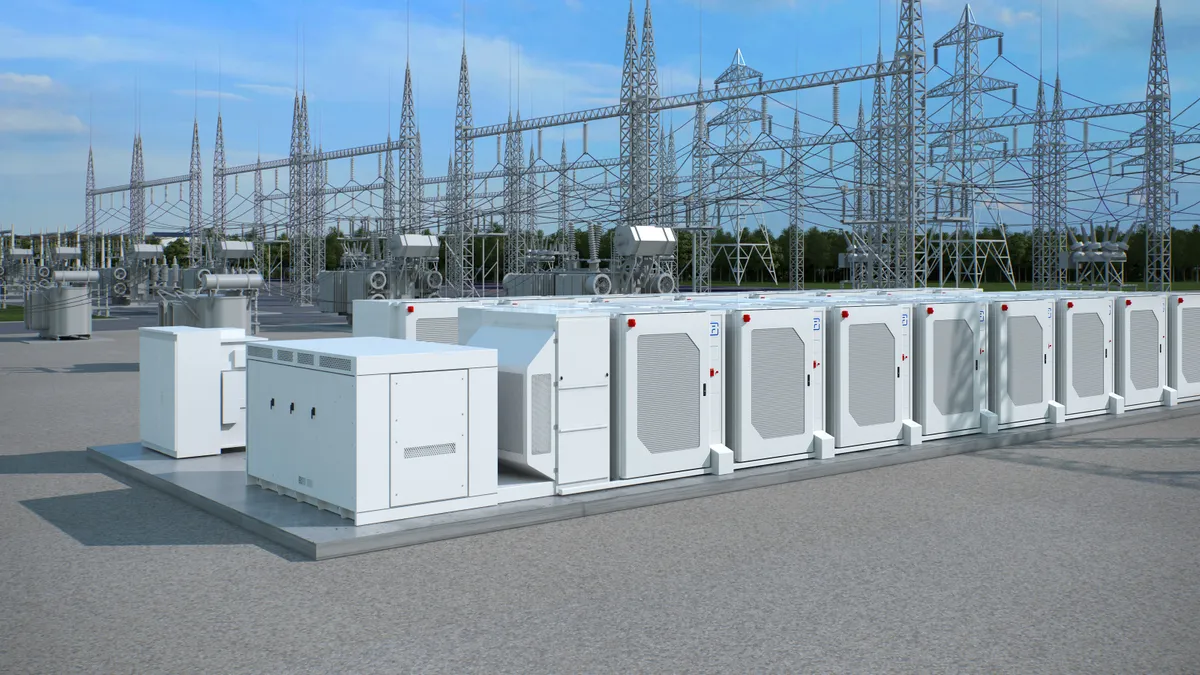Dive Brief:
- Energy storage company Fluence Energy recorded $1.1 billion of new orders in the fourth quarter of 2023, bringing its total contracted backlog to an unprecedented $3.7 billion, the company’s President and CEO Julian Nebreda told analysts during its earnings call Thursday.
- Fluence is also on track to begin manufacturing battery modules at a facility in Utah this summer, allowing it to tap into the “domestic content” tax credit included in the Inflation Reduction Act. The facility has been operational since 2022, when the company began assembling storage products at it.
- Fluence announced plans for the Utah facility in 2022, noting that it would help with regional deliveries and smooth out supply chain constraints. The facility will manufacture the cubes — modular storage systems — that are used in Fluence’s energy storage products, starting with a production capacity of 75 cubes a week and eventually doubling.
Dive Insight:
Fluence recorded quarterly revenue of around $364 million – a 17% increase compared to the fourth quarter of 2022 – and its contracted backlog increased from $2.9 billion on Sept. 30 to $3.7 billion as of Dec. 31, the company reported last week. It’s also focusing on battery module manufacturing at its Utah facility, as well as beefing up its supply chain strategy in the U.S. and abroad, according to Nebreda.
On the supply chain front, the company is deploying a series of strategies to ensure it can continue to meet demand. It is currently working with five battery suppliers, spread out across China, South Korea, Sweden, and the U.S., which offers more options and geographies to pull from. The company has also executed multi-year guarantee battery capacity contracts with these providers, which it says will cover its needs for fiscal years 2024 and 2025, Nebreda said.
Part of the focus is also on building out a supply chain based on the U.S., which accounts for some two-thirds of Fluence’s business, Nebreda said. Doing so will help it capture the domestic content incentives in the IRA, which is a 10% tax credit adder.
“It also enables us to introduce our proprietary battery management system – the software that runs the controls at the battery cell level and the initial point of control in a battery storage system,” as well as helps the company further commoditize its supply chain, he added.
Building out a domestic supply chain for battery storage products has been a key priority for the industry as well as the Biden administration. The incentives in the IRA could help boost domestic manufacturing, the Solar Energy Industries Association noted in a November whitepaper white paper – but the industry will still have to tackle issues like competing with Chinese products, accessing raw materials, and building out a workforce.
While the U.S. currently has the capacity to manufacture 60 GWh of lithium-ion batteries annually, that figure could increase to 630 GWh over the next five years with new factory announcements. Once the manufacturing capacity in countries that the U.S. has a free trade agreement with is factored in, total manufacturing capacity could be around 1,400 GWh annually by 2030, according to the white paper.
“We must recognize that building out a U.S energy storage value chain will take time, strategic investments, partnerships with experienced manufacturers, and collaboration with allies,” the white paper noted.
Correction: We have updated this story to correct the year when a Fluence manufacturing facility in Utah began operation.














